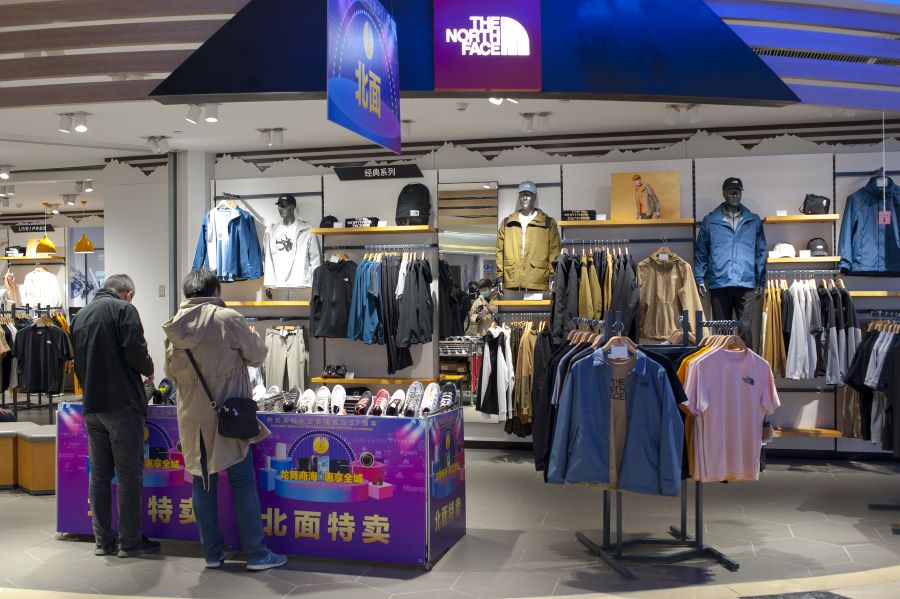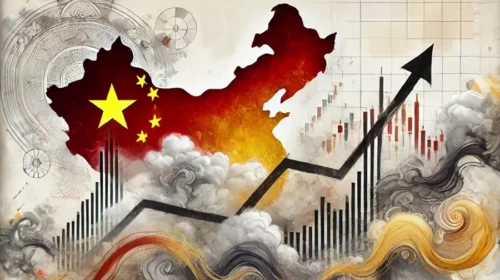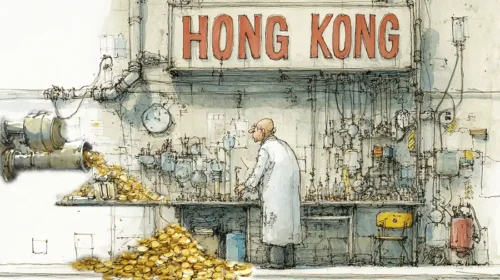Traditional Retailer Topsports Finds Better Profits in ‘Big Boxes’

Sportswear seller’s revenue jumps 21% in second half of its latest fiscal year and profits leap 75% as it focuses on mega-stores over smaller ones
Key points:
- Topsports’ shift to larger stores is showing results in the form of strong revenue and profit gains in the second half of its latest fiscal year
- The company’s shares look undervalued compared to its more famous peers Li Ning and Anta
By Doug Young
Questions may be hanging over the fate of the Summer Olympics in Tokyo, but that hasn’t dampened the broader enthusiasm for sports in China as it gets set to stage the Winter Games next February.
That’s one of the key messages in the latest annual report from Topsports International Holdings Ltd. (6110.HK), one of China’s leading sportswear retailers. The other unspoken message is that this company looks quite undervalued compared with its domestic and global peers, most likely due to its lesser-known name on the China sports scene.
We’ll return to the valuation overview later, but first we’ll review Topsports’ latest results that show a company in the midst of a major retooling that’s showing some early signs of success. The company’s main domestic rivals, including Li Ning and Anta, have been undergoing similar overhauls to face the growing challenge of e-commerce.
Topsports strategy is relatively straightforward: shut down smaller laggard stores in favor of larger mega-shops, often called “big boxes,” that can offer the widest array of products to compete with online stores with unlimited shelf space. The strategy makes sense in the shoe category where Topsports is a clear leader, since many people like to try on their shoes to make sure they fit properly before buying them.
Topsports marked a milestone in its latest fiscal year that ended in February by closing more stores than it opened during the 12-month period for the first time since it began publishing data. More precisely, it closed a net 389 stores during the year to bring its latest total to just over 8,000, compared with net openings of 52 and 41 in the two previous years.
At the same time, the ratio of its largest shops with more than 300 square meters of floorspace grew to 9.4% of its total store count at the end of February from 7.3% a year earlier. The number of its smallest stores with 150 square meters of space or less still makes up the majority of its total, but has been shrinking steadily. That figure accounted for 64.8% of its store count at the end of February, versus 75.5% three years earlier.
We won’t review too many other figures, though one that’s also worth mentioning is the company’s employee count. While the number of stores fell, Topsports’ employee base actually grew by a quite brisk 13% to 40,348 by the end of its latest fiscal year from a year earlier. While the year-ago figure might represent some layoffs due to the Covid outbreak that was just beginning at that time, the latest gain does seem to reflect the company’s focus on larger stores that require more staff.
All that brings us to Topsports’ top and bottom lines, which look quite impressive for the second half of the year. Its revenue rose by a brisk 21% to 20.2 billion yuan ($3.1 billion), while its profit soared by an even larger 75.6% to 1.5 billion yuan, based on calculations using its annual figures and previous interim report.
Both figures marked reversals from declines of 7% and 11% in revenue and profits, respectively, in the first half of the year due to the pandemic’s impact.
Lukewarm Investor Reaction
Investors initially cheered the results, bidding up Topsports’ Hong Kong-listed shares by around 7% in pre-market trade on Tuesday. But the revelry was relatively short-lived, with the stock settling down after that to trade up a more-modest 2.4% in the regular morning session.
At its current level, the stock trades at a price-to-earnings (PE) ratio of 23 based on earnings from its fiscal year ended in February. While that’s not bad for a traditional retailer, it’s far below the PEs of 84 and 68 for domestic rivals Li Ning and Anta, which may owe partly to the more “famous-brand” premium attached to those two names. Nike and Adidas, which both have relationships with Topsports, also both trade at significantly higher PEs of around 62.
Unlike all the flashier names, Topsports has a decidedly humbler heritage. It was previously the retailing component of Belle International, one of the world’s largest shoemakers that was one of those “biggest names you’ve never heard of” companies. Belle was previously traded in Hong Kong, but was taken private in 2017 by a group led by Chinese private equity giant Hillhouse Capital.
Hillhouse would later hive off Topsports for a re-listing in 2019 and remains one of the company’s largest shareholders. Topsports also got another major vote of confidence at the end of last year when global giant Credit Suisse bought 14% of its shares.
The company’s shares have performed relatively well since their listing, currently up about 40% from their IPO price of HK$8.50 from October 2019. But they are relative laggards compared to Li Ning’s 170% gain over that time, and Anta’s doubling.
In terms of broader outlook, all of the sportswear sellers are hoping for a coming boom fueled by Beijing’s drive to promote more general participation in sports by average Chinese. That campaign is being driven both by health reasons and also as China tries to become a global powerhouse in many major sports like soccer and basketball, where it is currently a laggard.
In its latest report, Topsports points out that development of the nation’s sports will be an important part of China’s newest Five Year Plan, a national economic development roadmap that runs from 2021 to 2025.
“The General Administration of Sport of China estimated that the size of China’s sports industry will account for 4% of its GDP by 2035 and will become an important pillar that supports China’s economic progress,” it said in its report.
While quoting such aspirations is clearly a bit self-promotional, we should also point out that China is quite serious when it decides to promote anything, be it sports, electric cars or artificial intelligence. Accordingly, Topsports and its peers should be well-positioned to benefit from the nation’s future sports promotional efforts. What’s more, the company does look to be significantly undervalued, reflecting potential upside for its stock if it can raise its profile as it continues to execute on its “big box” strategy.
To subscribe to Bamboo Works weekly newsletter, click here






